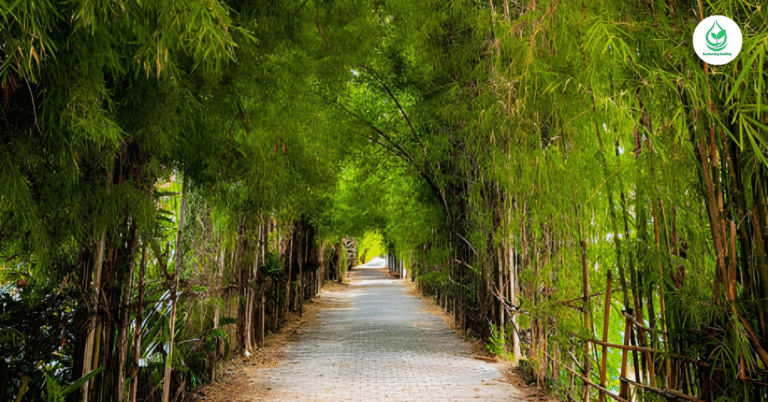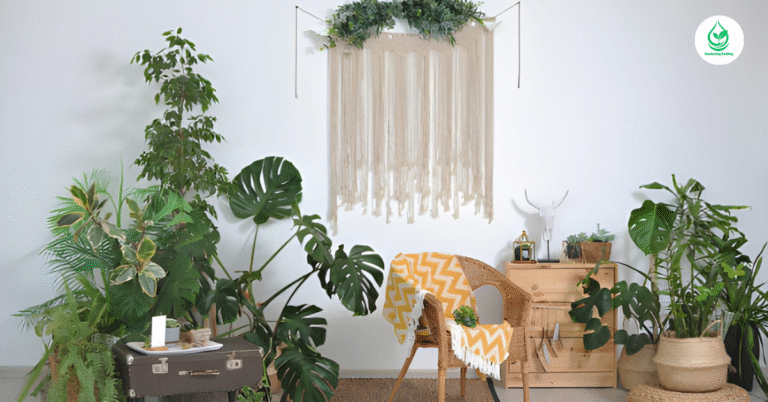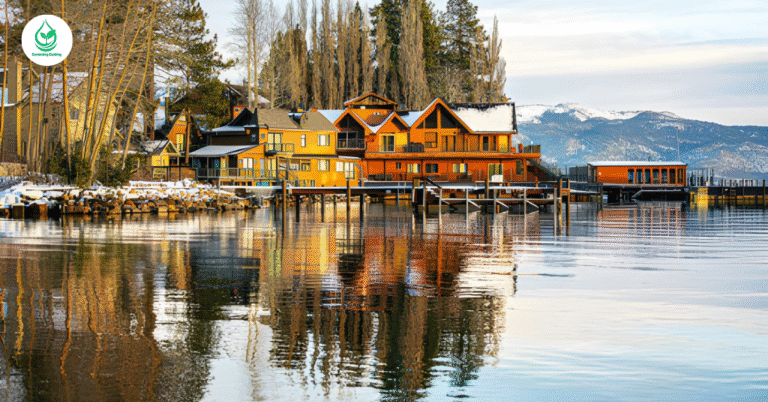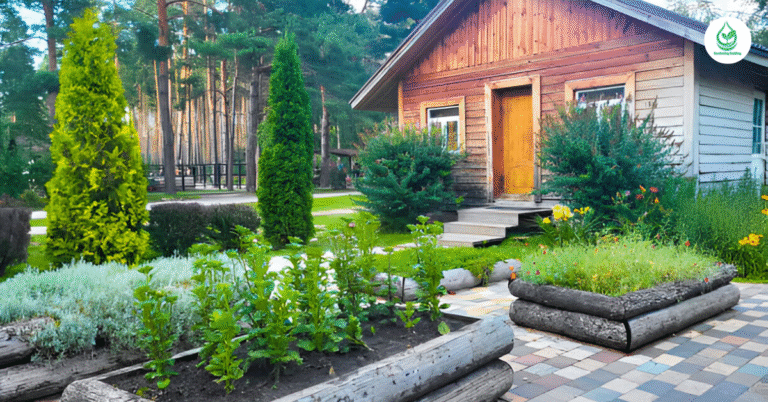6 Terrace Garden Design Ideas to Transform Your Outdoor Space

Introduction
A terrace garden is more than just a pretty space—it’s a lifestyle upgrade. Whether you live in a city apartment or a spacious home with a rooftop, creating a terrace garden allows you to bring nature closer while making the most of limited outdoor space. From modern minimal layouts to lush green retreats, terrace gardens add charm, improve air quality, and provide a private escape from everyday stress.
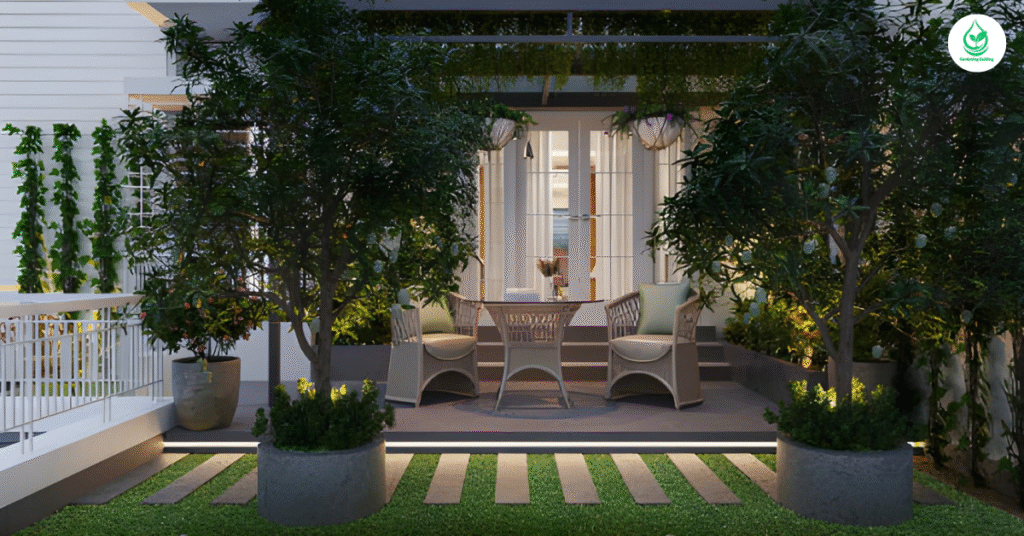
In this article, we’ll explore 6 terrace garden design ideas that blend creativity, beauty, and functionality. Each design is versatile, meaning you can adapt it to your budget, lifestyle, and available space. By the end, you’ll have plenty of inspiration to create your own personalized green haven right on your terrace.
1. Modern Minimalist Terrace Garden
Sleek Furniture Choices
A modern minimalist terrace garden focuses on clean lines and uncluttered spaces. Furniture made from metal, rattan, or lightweight wood fits perfectly, as it balances comfort and style. A couple of low-seating chairs and a compact coffee table can transform the space into a cozy corner for relaxation. The goal is to keep the setup simple but elegant.
Neutral Color Palettes
Colors play a huge role in creating a minimalist vibe. Shades of white, grey, beige, and earthy tones keep the terrace calm and soothing. Adding small pops of green from plants highlights the natural beauty without overwhelming the space. This approach creates a sleek, urban feel while still making the area inviting and peaceful.
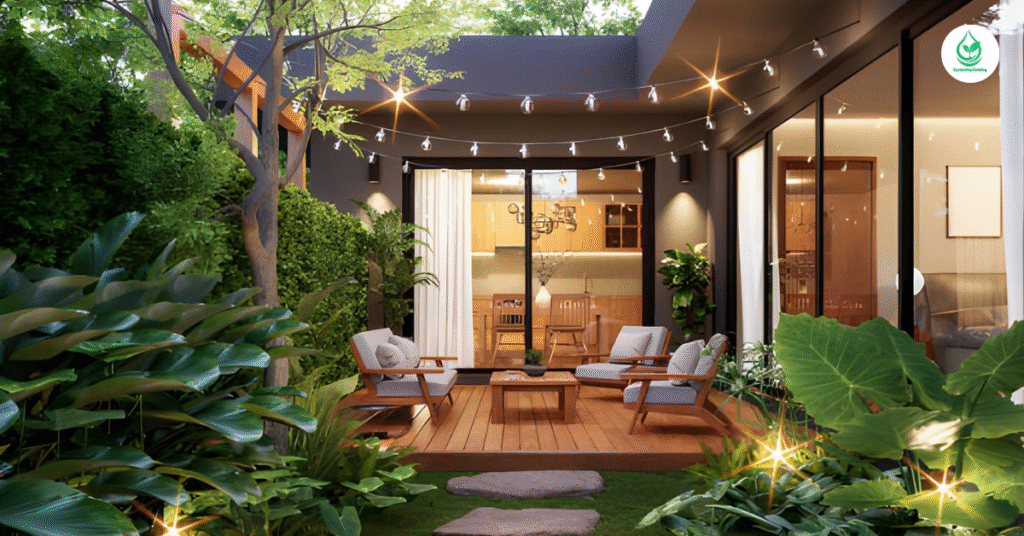
Functional Layout
Every inch of a minimalist terrace should serve a purpose. Raised planters along the edges or vertical plant walls save floor space while creating greenery. By arranging furniture against walls or corners, you free up walking space, making the terrace feel larger and more open. This layout not only looks good but also makes the area easier to maintain.
2. Lush Green Paradise
Layered Plant Arrangements
A lush green terrace garden thrives on the beauty of variety. Combining tall trees in pots, medium shrubs, and trailing vines creates a layered effect that feels like stepping into a small forest. Each layer adds depth and dimension, making the terrace look fuller and more natural.
Shade and Comfort
Adding pergolas, umbrellas, or natural bamboo screens ensures the terrace stays comfortable even on sunny days. Shade structures not only protect your plants but also create cozy seating zones where you can relax, read, or enjoy meals. Mixing greenery with shaded spots gives the space a true tropical escape vibe.
Seasonal Plant Mix
To keep the garden lively year-round, use plants that bloom or stay green in different seasons. For example, mix flowering plants like hibiscus with evergreen options such as ferns. This ensures that no matter the month, your terrace garden remains fresh, colorful, and inviting.
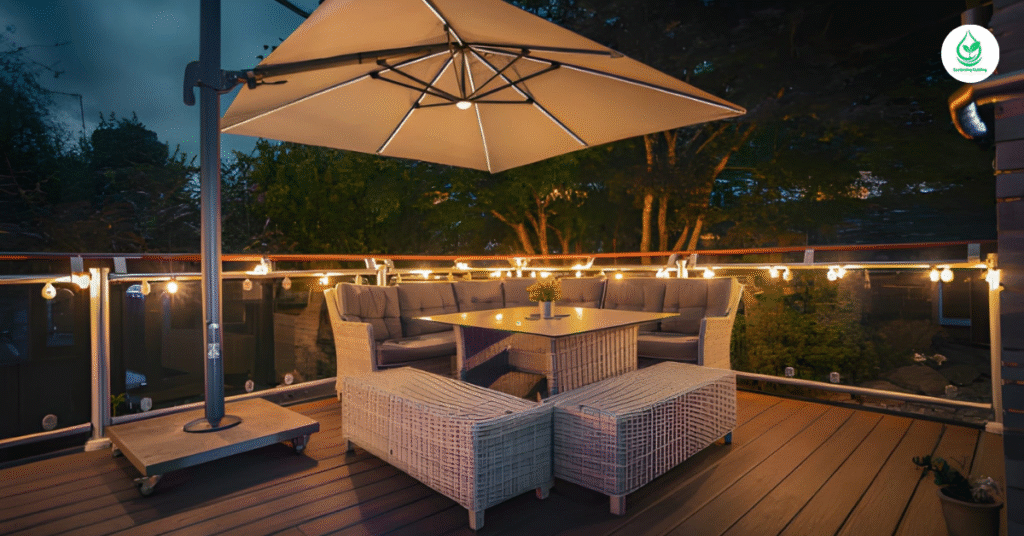
3. Terrace Garden with Water Features
Adding a Small Fountain
Water features instantly elevate the beauty of a terrace garden. A small tabletop fountain or a wall-mounted waterfall creates soothing sounds that help drown out city noise. The gentle flow of water adds a calming, Zen-like atmosphere to the entire space.
Pond or Water Bowl
If space allows, a mini pond with aquatic plants like lilies or a decorative water bowl can become a stunning centerpiece. These water elements don’t need to be large; even compact setups add charm and freshness to the terrace while supporting biodiversity by attracting birds and insects.
Light and Reflection
Lighting around the water feature makes evenings magical. Small LED lights or lanterns create beautiful reflections in the water, enhancing the nighttime vibe. This setup turns your terrace into a peaceful retreat where you can unwind after a long day.
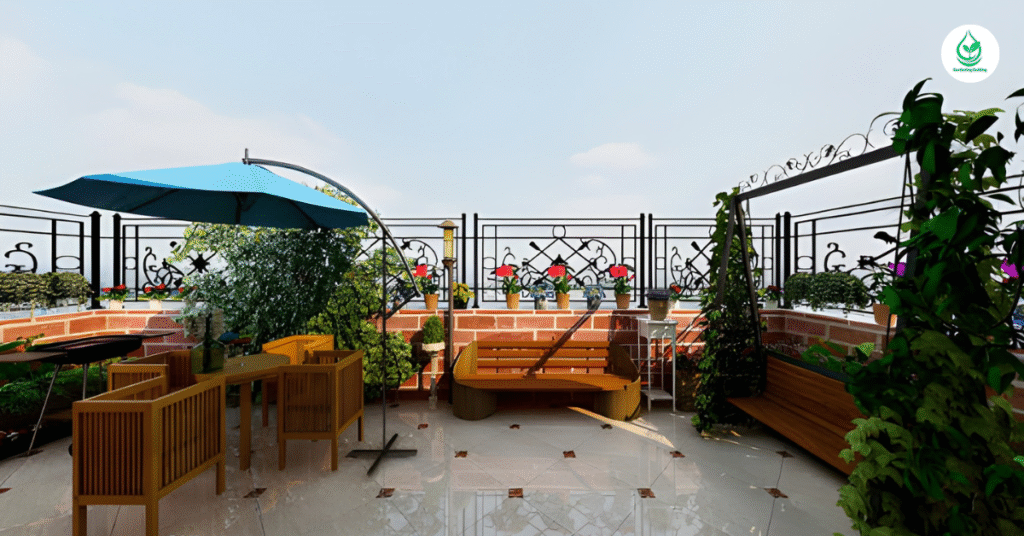
4. Terrace Garden with Vertical Green Walls
Maximizing Space
Vertical gardens are perfect for small terraces. Installing plant panels or climbers on trellises makes use of wall space without crowding the floor. This design not only maximizes greenery but also creates a striking visual impact.
Creative Plant Choices
Succulents, ferns, herbs, or even flowering plants can thrive in vertical arrangements. By mixing colors and textures, you can design walls that look like living art. Adding herbs like mint or basil also gives the vertical garden a functional twist, perfect for home cooks.
Easy Maintenance
Drip irrigation systems or self-watering planters make vertical gardens easier to maintain. Since plants are organized systematically, watering and pruning take less effort. This makes vertical walls both practical and stylish for busy homeowners.
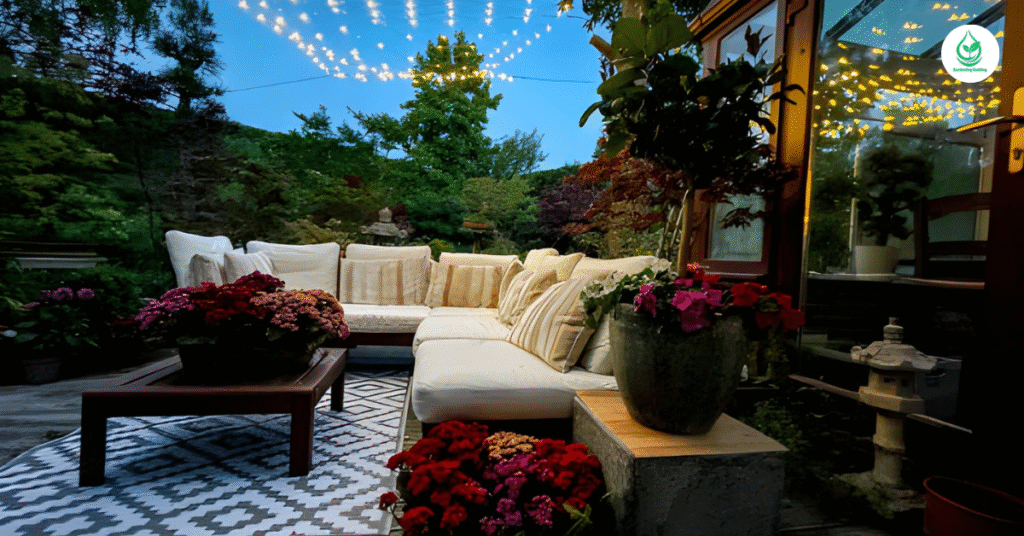
5. Terrace Garden with Outdoor Dining Setup
Stylish Dining Furniture
Adding a dining table with comfortable chairs transforms your terrace into a perfect outdoor dining zone. Choose weather-resistant furniture like teak, aluminum, or rattan to ensure durability. Pair it with soft cushions for a cozy touch.
Lighting for Ambience
Hanging string lights, lanterns, or solar lamps creates a warm, welcoming vibe for evening dinners. Proper lighting not only highlights plants but also sets the mood, making meals outdoors feel extra special.
Seasonal Decor
You can easily change the look of this terrace garden by updating table decor with flowers, seasonal plants, or themed centerpieces. This keeps the area fresh and exciting, making it a favorite spot for both family dinners and small gatherings.
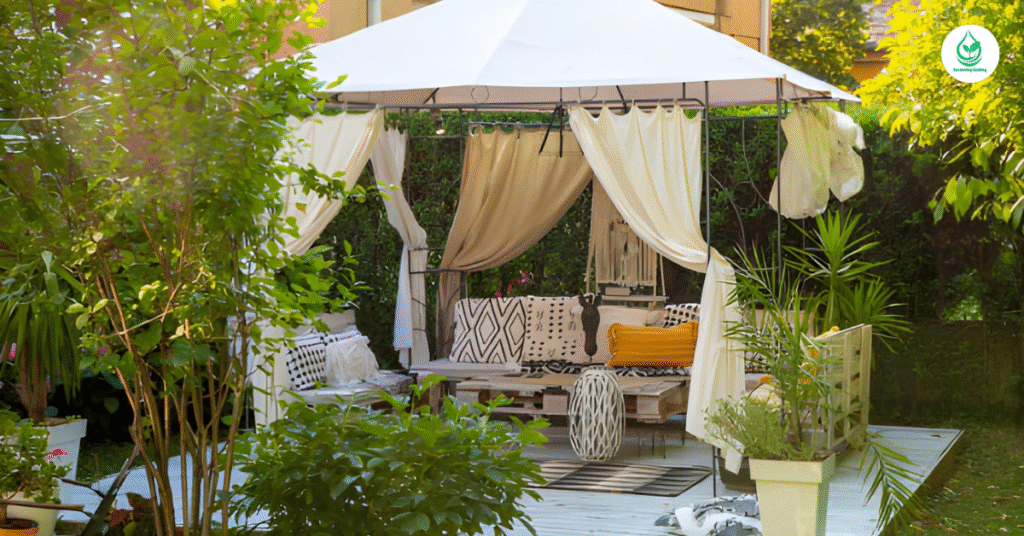
6. Terrace Garden with Relaxation Zone
Hammocks and Lounge Chairs
A terrace garden should also be a place of rest. Adding hammocks, daybeds, or lounge chairs creates a personal retreat for relaxation. These seating options make the space inviting, especially when paired with soft pillows and throws.
Calming Elements
To enhance relaxation, include calming elements like wind chimes, soft lighting, or scented candles. These details help create a tranquil atmosphere that feels far away from the busy city, even when you’re right in the middle of it.
Green and Cozy Corners
Positioning leafy plants around seating zones enhances privacy while making the area feel lush and natural. By surrounding your rest spots with greenery, you create a cozy little cocoon where you can meditate, nap, or just enjoy a cup of tea.
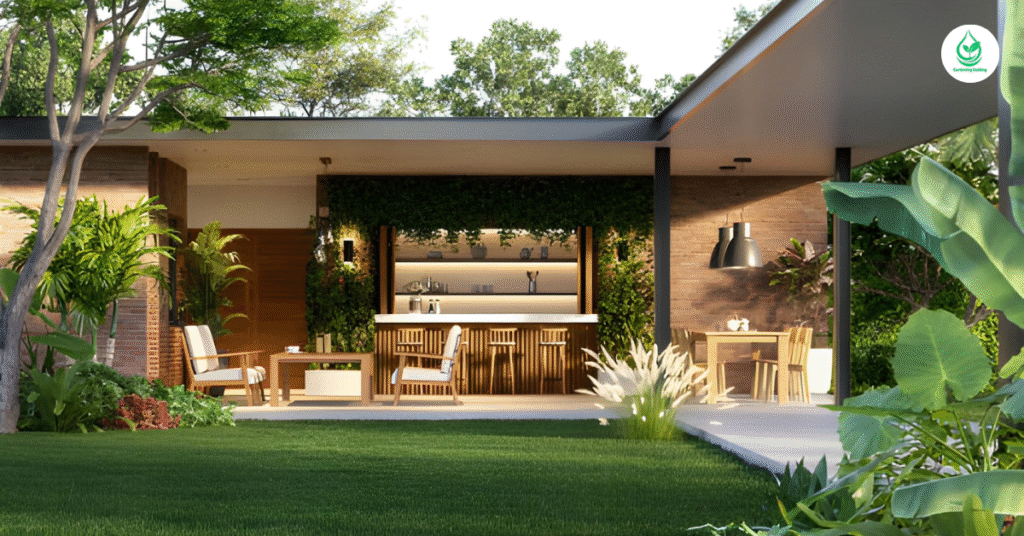
Conclusion
Terrace gardens are more than just decorative spaces—they’re practical, therapeutic, and valuable additions to your home. From modern minimalist layouts to lush tropical retreats, each of the six terrace garden design ideas offers something unique. Whether you want a quiet relaxation zone, a vibrant outdoor dining spot, or even a vertical green wall for small spaces, you can easily adapt these designs to fit your lifestyle and budget.
The beauty of a terrace garden lies in its flexibility—you can start small with potted plants and expand gradually with furniture, water features, or shade structures. No matter which design you choose, your terrace garden will bring fresh air, greenery, and joy to your everyday life.
Pros and Cons of Terrace Garden Designs
Pros
- Improves Air Quality – Plants filter pollutants and bring more oxygen into your home.
- Adds Aesthetic Appeal – Enhances the beauty of your terrace with greenery and design elements.
- Boosts Mental Health – Spending time around plants reduces stress and improves mood.
- Increases Property Value – Well-designed terrace gardens make homes more attractive to buyers.
- Flexible Designs – Options for every budget, from simple potted plants to luxury layouts.
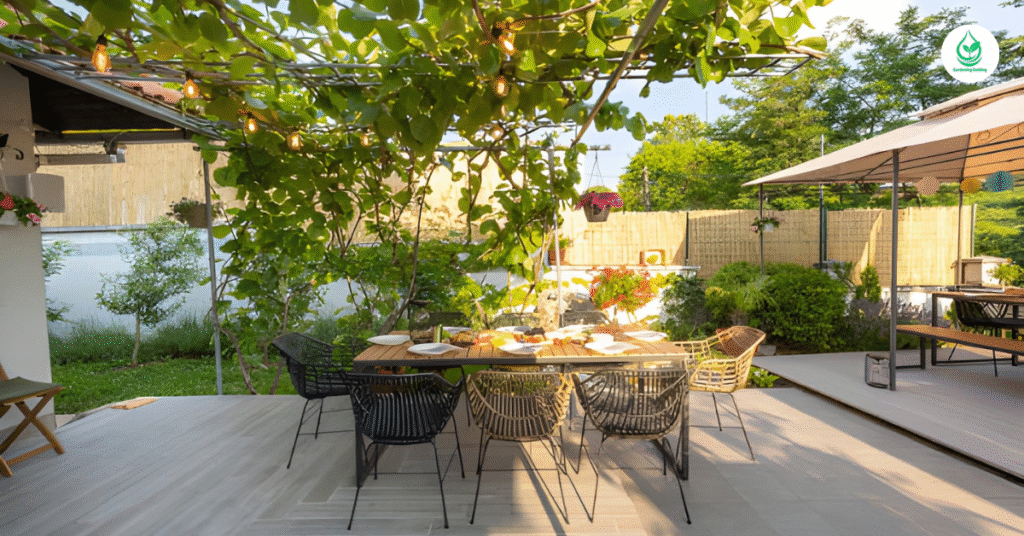
Cons
- Requires Regular Maintenance – Plants, water features, and furniture need upkeep.
- Waterproofing Issues – Without proper care, terraces may face leakage problems.
- Weight Considerations – Heavy planters and furniture may need structural checks.
- Weather Challenges – Heat, rain, and wind can affect plant health and furniture durability.
- Initial Costs – Designing a full terrace garden can require significant investment.
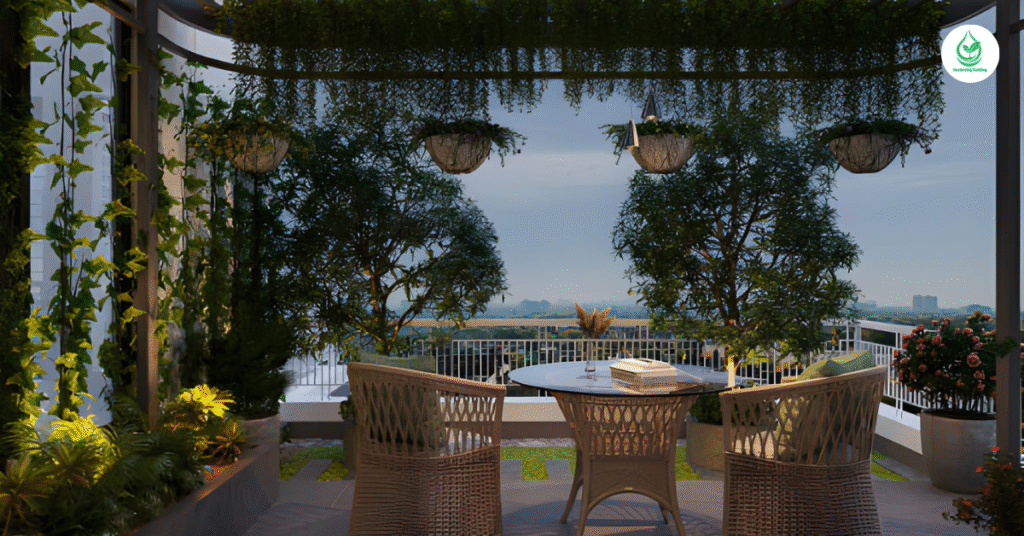
Comparison Table of 6 Terrace Garden Designs
| Terrace Garden Design | Best For | Key Feature | Maintenance Level |
| Modern Minimalist | Urban apartments | Sleek furniture & neutral tones | Low |
| Lush Green Paradise | Nature lovers | Layered plants & shade | Medium |
| With Water Features | Relaxation seekers | Fountains, ponds, reflection | Medium-High |
| Vertical Green Walls | Small spaces | Wall-mounted greenery | Low-Medium |
| Outdoor Dining Setup | Families & entertainers | Dining furniture & lighting | Medium |
| Relaxation Zone | Personal retreats | Hammocks, lounge chairs | Low-Medium |
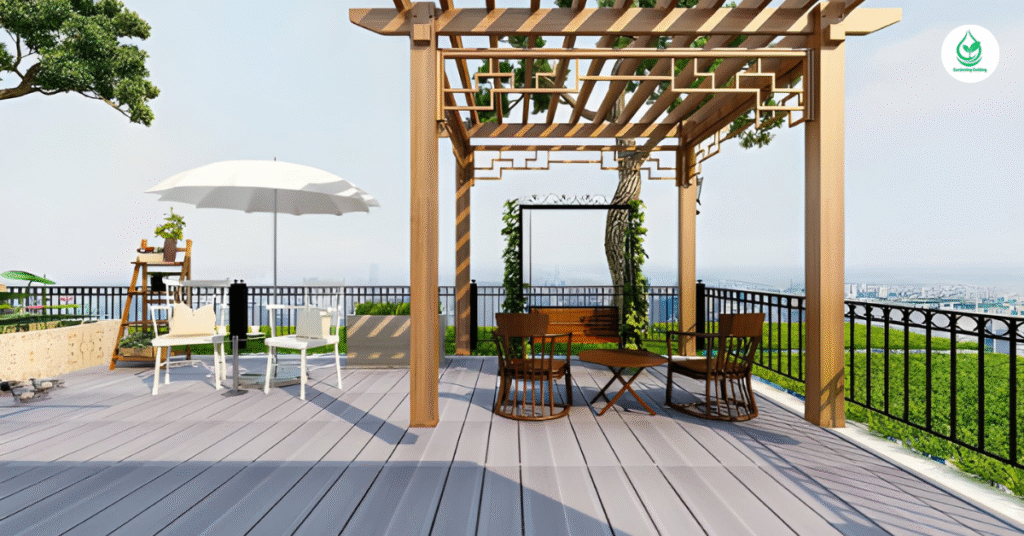
FAQs About Terrace Garden Design
Q1. What is the best flooring for a terrace garden?
Tiles, wooden decking, or weatherproof stone are ideal for terrace gardens as they withstand water and are easy to clean.
Q2. How do I protect my terrace from leakage?
Waterproofing the floor with proper coatings and ensuring good drainage prevents leakage issues. Using lightweight planters also helps.
Q3. Which plants are best for terrace gardens?
Plants like ferns, bougainvillea, hibiscus, succulents, and herbs such as basil or mint thrive well in terrace gardens.
Q4. How much does it cost to build a terrace garden?
A simple setup with planters can start at a few hundred dollars, while larger designs with furniture and water features may cost thousands.
Q5. Can I have a terrace garden in a rented apartment?
Yes, choose portable options like potted plants, hanging baskets, and lightweight furniture that you can easily move later.
Q6. Do terrace gardens require a lot of sunlight?
Most plants need 4–6 hours of sunlight, but shade-loving plants like ferns and peace lilies can thrive with less.
Q7. Is it safe to grow trees on a terrace?
Yes, but only in lightweight, large planters and after checking your terrace’s structural load capacity.
Q8. How can I make my terrace garden low maintenance?
Opt for self-watering pots, drip irrigation, and hardy plants like succulents or palms to reduce daily care.
Q9. What are eco-friendly terrace garden ideas?
Use recycled pots, rainwater harvesting, composting, and native plants to make your garden sustainable.
Q10. Can I combine a terrace garden with solar panels?
Yes, but proper planning is required to balance sunlight needs for plants and solar panel placement.

